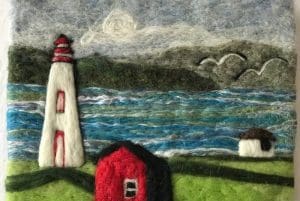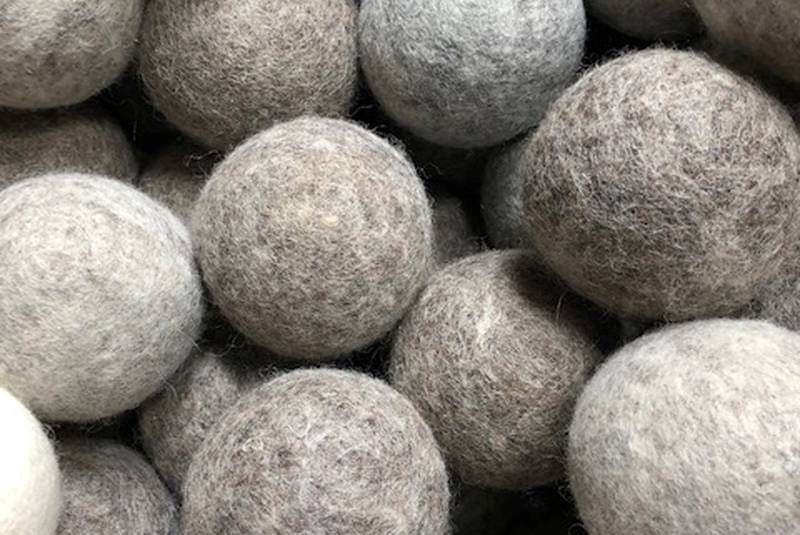Brenda Gilmour and her husband were living in Vermont when they vacationed in Nova Scotia and began looking for land. Gilmour, originally from Montreal, had attended Acadia University in Wolfville, N.S. She and her husband, Dave Sogorka, a building contractor originally from New York, bought the tumbledown farm on four hectares near Wolfville in 1988.
After being gifted with a few sheep and a lamb, the idea for the wool shop was born. Her husband converted a barn, which had once housed a service station, into a retail and crafting space and, in May 2003, the wool shop opened its doors. The flock has grown each year, and so have the customers.
It’s lambing season at Gaspereau Valley Fibres Farm in Nova Scotia. The small sheep farm is home to a herd of about 60 endangered wooly Cotswold sheep.
“We raise them mostly for their wool. They’re very wooly,” says Brenda Gilmour, owner of the farm shop.
The Cotswold is a heritage breed of sheep, which is now endangered. The sheep are highly prized for their lustrous, curly and heavy fleece.

Wool crafts are popular right now, she says, especially while people are social distancing due to COVID-19. The shop offers yarn for knitting and crafting, as well as kits for needle felting and other crafts, including dryer balls.
Dryer balls are a popular eco-craft that can be made from fresh roving, Gilmour says. The shop sells pre-made dryer balls but also offers wool roving kits for making your own. According to Gilmour, wool dryer balls decrease drying time, which saves money on utility bills – something that’s especially helpful in winter months. Dryer balls also soften clothes naturally, without the chemicals used in dryer sheets and softeners. Wool dryer balls can be re-used, saving both money and landfill space.
Gilmour recommends making dryer balls from wool roving, which is loose fiber from sheep that hasn’t been spun. Other alternatives include upcycling old wool sweaters by unraveling them to create yarn or using 100 per cent wool yarn to create the balls.
The balls are wrapped tightly and secured by threading the yarn or roving through the ball with a crochet hook. Then, the balls are tied into old pantyhose or nylons and put through the washer and dryer on high heat.
“That finishes them. It felts them and makes them solid,” said Gilmour.
Instructions for making the dryer balls are available online, she adds.
“Some people buy the pre-made balls from the shop and decorate them with needle felting. They come in three colours – light grey, dark grey and white – the natural colours of sheep,” said Gilmour.
Interest in wool needle felting – the art of making small three-dimensional objects from loose wool roving – is also growing. Gilmour notes it’s quite popular right now, but recommends beginners pick up a kit if they’re interested in trying it out.
“It’s a pretty inexpensive craft to start. You just need a felting needle and some wool roving,” she says.
Needle felting is a popular craft for making Christmas ornaments, small toys and decorative items.
Usually at this time of year, the shop is busy with customers coming in to buy wool and watch the shearing operations.
“People love to see the lambs. But none of that can happen right now,” said Gilmour.
The shop is currently closed to the public but taking orders for curbside pickup. In normal years, the fibre shop offers classes in knitting, spinning, weaving and felting, plus a weekly knitter’s group.
“We have a lot of people picking up yarn. People are stuck at home and wanting to knit sweaters or make wool crafts now that they have lots of time. It helps them keep their sanity,” said Gilmour.
Retrieved from https://www.thechronicleherald.ca/lifestyles/regional-lifestyles/go-beyond-knitting-try-making-your-own-dryer-balls-or-needle-felting-450289/

